1998
Type of resources
Available actions
Topics
Keywords
Contact for the resource
Provided by
Years
Formats
Representation types
Update frequencies
Scale
-
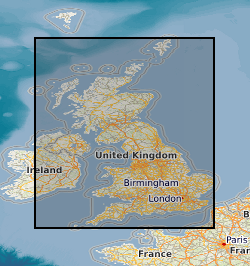
Several coal resource maps for the whole of the UK have been produced by the British Geological Survey as a result of joint work with Department of Trade and Industry and the Coal Authority. The UK Coal Resource for new exploitation technologies map is a map of Britain depicting the spatial extent of the principal coal resources overlayed with existing workings and potential new technologies for accessing the resource. The map also shows the areas where coal and lignite are present at the surface and also where coal is buried at depth beneath younger rocks. The project covers all onshore coalfields in the UK, including Northern Ireland. It includes coal under estuaries and near-shore areas that can practically be reached by land-based directional drilling. No data more than 5 km offshore were considered. The maps are intended to be used for resource development, energy policy, strategic planning, land-use planning, the indication of hazard in mined areas, environment assessment and as a teaching aid. In addition to a summary map at 1:750000 scale for Britain data also exists for each technology of 21 individual regions or coal fields at a scale of 1:100000. The data was published in printed map form for the summary map, inkjet plots for the 42 individual maps and as PDF documents on CD. The maps were accompanied by BGS report CR/04/015N, "UK Coal Resource for New Technologies, Final Report". The work was initiated in April 2002 and completed in October 2003. The data was also simplified for inclusion in the Britain Beneath your Feet atlas 2005.
-
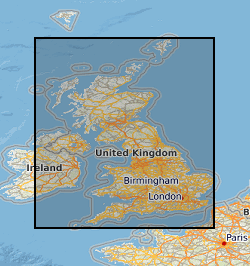
Many mineral resource maps for areas of Great Britain at scales of 1:25 000 and 1:50 000 have been produced by the British Geological Survey and its predecessors. Many of these maps were produced by the Industrial Minerals Assessment Unit (IMAU) from 1971 to 1986. Most maps cover a single 10 km x 10 km grid square, but some cover larger areas. The majority of maps are sand and gravel resource maps, but conglomerate, limestone, dolomite and celestite are also covered in certain regions. The maps show the locations of IMAU mineral resource blocks, the locations and categories of resource deposits and the locations of boreholes with indicative logs. A series of technical reports (Mineral Assessment Reports, MARs) was also created alongside the maps. Refer to the metadata entry for the Mineral Assessment Reports for more information. The maps are intended to be used for resource development, strategic planning, land-use planning, the indication of hazard in mined areas, environment assessment and as a teaching aid. The data was originally published in printed map form. The printed maps have been scanned and added to the BGS Maps Database.
-

Fibre-optic spectrophotometry permits the non-destructive analysis of speleothem luminescence wavelength with a temporal resolution of 1-10 years. This luminescence derives from the overlying soil organic waste matter: humification rate is climatically controlled in temperate latitudes. A pilot study demonstrates a correlation between the luminescence emission wavelength and mean annual rainfall over the last 70 years, and for the last 3000 years a remarkable 80-100 cyclicity in luminescence is observed, as well as longer term luminescence trends and the presence of short lived, severe events. This project aims to (1) provide a calibration of stalagmite luminescence over the last 100 years from sites contrasting climate, before (2) providing high resolution records of Holocene climate change from multiple samples.
-

Knowing the age of diamonds is critical to understanding their formation and likely distribution in the mantle. Re-Os isotope analyses of synergetic sulphide inclusions allows dating of individual diamonds by isochron and model age methods. This method will be applied to a suite of well-characterised Siberian diamond inclusions from several different kimberlite pipes. We will aim to determine the ages of eclogite-suite and periodite-suite diamonds, which may provide clues as to their different modes of origin. Shrimp ii Pb-Pb isotope and S-isotopic measurements will further constrain the age and origin of the sulphides and hence the diamonds. N-aggregation studies on the host diamonds will independently assess mantle residence times. We will examine absolute age differences between cores and rims of diamonds by laser cutting fragments of diamonds with multiple inclusions.
-

Data relating to project specific sites of investigation into fluid processes in landfills and mine sites.
-
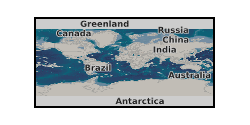
The SACS Best Practice Manual consists of two parts. The first part outlines the operational experiences gained during the Sleipner CO2 injection operation. The second part consists of recommendations based on the monitoring the Sleipner CO2 injection operation during the SACS project. The report can be downloaded from http://www.ieaghg.org/docs/General_Docs/Reports/SACS%20Best%20Practise%20Manual.pdf.
-
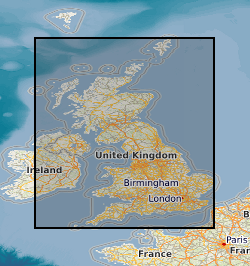
The BGS collection of downhole CCTV (Closed Circuit Television) recordings and backup tapes for worldwide SKYLAB satellite imagery. CCTV recordings carried out down boreholes, mainly drilled for water, were undertaken by BGS for specific commercial contracts in Great Britain, and may also have associated geophysical data. The collection started in 1997, and the present holdings are 138 videos, with infrequent additions. Video recordings on other topics may be added.
-

The processes by which frost shatters rock are subject to controversy. The main objective of the proposed research is to develop a new methodology for experimentally testing a model of ice segregation in permafrost. Using specialist cold-room facilities in the CRNS Centre de Geomorphologie, Caen (France), the methodology will simulate the bedrock thermal and hydrological regime at the top of cold permafrost in order to determine whether growth of segregated ice within the simulated permafrost shatters a large block of frost susceptible rock (chalk). Verification of the ice-segregation hypothesis by the proposed experiment would have international significance to the fields of permafrost science, engineering and rock weathering because it would emphasise the unified nature and consequences of ground-ice development in fine-grained soils and rocks.
-
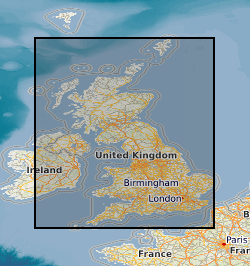
Index, set up in 1998, to the archive collection of reports, notebooks interpretations, plans and other geological or related data received from external organisations that are not part of other collections. These cover a wide variety of different types and ages of information mainly from Great Britain but some related to BGS projects overseas.
-

The most sustained steep increase in marine biodiversity took place during the Ordovician. The variety of biogeographical and palaeoecological settings in the British Isles, the historical type area for the Ordovician, makes this a crucial area for understanding the patterns and processes of biodiversity change. Databases on well-constrained spatial and temporal distributions of organisms will be compiled and analysed to answer a series of pertinent questions on the timing, patterns and controls of biodiversity increase and also its implications for the end-Ordovician extinction event. The understanding of these issues will contribute directly and significantly to the global analysis of Ordovician biodiversity change
 NERC Data Catalogue Service
NERC Data Catalogue Service